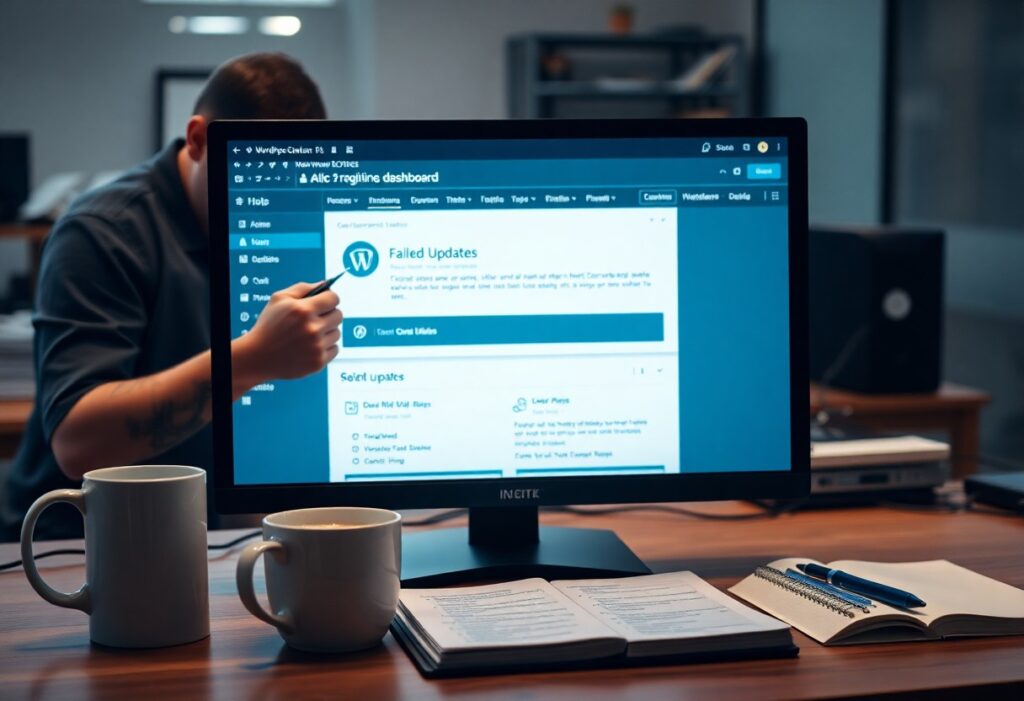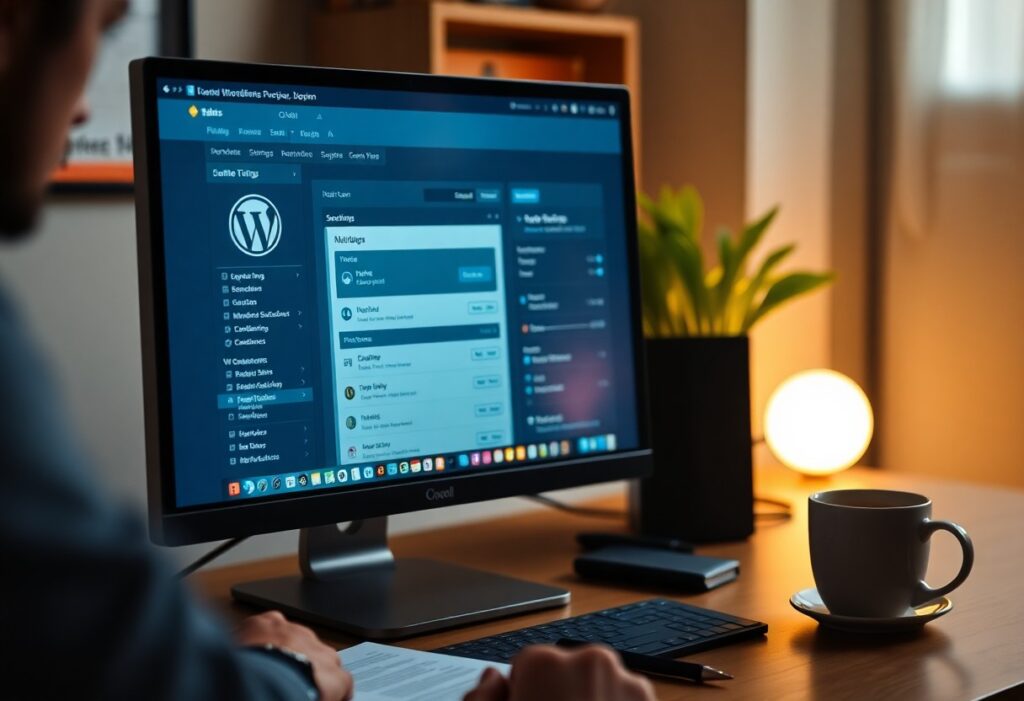SEO success hinges on effective on-page optimization, and understanding how to properly utilize titles, meta tags, and image alt text is imperative for your website’s ranking potential. This checklist will guide you through each element, ensuring that your content not only attracts viewers but also satisfies search engine algorithms. By implementing these strategies, you can enhance your visibility and ultimately drive more traffic to your site.
Understanding On-Page SEO
On-Page SEO encompasses the strategies you implement directly within your website to enhance its ranking on search engines. This discipline involves optimizing elements like content, HTML tags, and images, ensuring each part of your webpage contributes to a cohesive SEO strategy. Examining factors such as keyword placement and site structure is vital, as these aspects significantly influence search engine visibility and user experience.
What is On-Page SEO?
On-Page SEO refers to the practices used to optimize individual web pages for higher search engine rankings and user engagement. This includes the meticulous use of keywords, crafting informative content, and structuring HTML elements, all aimed at both satisfying search algorithms and providing valuable information to your audience. Effective On-Page SEO helps search engines understand your content, leading to improved visibility.
Importance of Titles, Meta Tags, and Image Alt Text
Titles, meta tags, and image alt text play a vital role in On-Page SEO by influencing how search engines interpret and rank your content. Titles are your first chance to capture attention in search results, while meta tags provide concise descriptions that can increase your click-through rate. Image alt text enhances accessibility and ensures search engines can index your images correctly, contributing to overall SEO performance.
Having well-optimized titles, meta tags, and image alt text can significantly impact user engagement and search engine rankings. For instance, titles that are both informative and keyword-rich can drive a higher click-through rate of up to 20%. Meta descriptions, when crafted effectively, serve as an invitation to your content and can improve your visibility on SERPs. With images, using descriptive alt text not only aids SEO but also improves accessibility for visually impaired users, aligning with best practices in web design. By integrating these elements, you create pages optimized for search engines and friendly for users, enhancing the overall effectiveness of your On-Page SEO strategy.
How to Optimize Titles for SEO
Optimizing your titles is important for improving your site’s visibility in search engines. Effective titles provide clarity about your content, attract clicks, and support your overall SEO strategy. By implementing best practices, you can enhance your chances of ranking higher while appealing to your target audience.
Tips for Crafting Effective Titles
Craft titles that grab attention while remaining relevant. Here are some key tips:
- Incorporate main keywords near the beginning.
- Aim for compelling language that sparks interest.
- Keep titles under 60 characters for optimal display in search results.
- Utilize numbers or lists to enhance engagement.
Recognizing your audience’s search intent will help you create irresistible titles that drive traffic to your site.
Factors to Consider for Title Length and Keywords
Balancing title length and keyword usage is vital for SEO success. Google generally displays up to 60 characters, so concise, keyword-rich titles perform better. Consider using tools like SERP preview to track how your titles appear in search results.
- Focus on main keywords that align with the content.
- Maintain an engaging tone to attract clicks.
- Prioritize relevance over creativity to meet SEO standards.
Assume that optimizing your titles with these strategies will significantly increase click-through rates and enhance visibility.
Understanding how search engines interpret title length and keywords can lead to better optimization. Titles are not only a ranking factor but also the first impression users have of your content. Shorter titles, under 60 characters, help maintain attention in a crowded search result space. Utilizing relevant main keywords enhances searchability while aligning with users’ queries. Finding the right balance between clarity and creativity can influence engagement levels. Aim to provide readers with a clear expectation of your content, as this fosters trust and encourages them to click on your link. Assume that well-structured titles will yield better performance in search results.
- Maintain a focus on main keywords for SEO effectiveness.
- Analyze competitors’ title strategies for insights.
- Test different title formats to assess performance.
Assume that consistent optimization practices will establish stronger click rates and better user engagement.
How to Optimize Meta Tags
Meta tags play a pivotal role in how your content is perceived by search engines and users alike. They provide imperative information about your webpages, influencing click-through rates and overall SEO performance. Use keyword-rich titles and compelling meta descriptions to attract more visitors. Optimize these elements to align with your content, ensuring clarity and relevance. This approach will enhance your website’s visibility and engagement.
Tips for Writing Compelling Meta Descriptions
Crafting a compelling meta description is imperative to capture user attention. Aim for clarity and urgency to entice clicks, and consider these tips:
- Incorporate your primary keywords.
- Keep it under 160 characters to avoid truncation.
- Use action-oriented language to inspire clicks.
- Avoid duplication; each page should have a unique description.
This will improve your chances of ranking higher.
Factors Affecting Meta Tag Performance
Several factors can impact how effectively your meta tags perform. Search engines analyze a combination of elements, including the relevance of your keywords, the quality of content, and user behavior. Meta tags that align closely with search intent and user engagement metrics tend to perform better. The integration of semantic keywords also enhances relevancy.
Optimizing these factors can yield better visibility on search engine results pages (SERPs). Consider how user interaction, such as click-through rates, directly affects rankings over time:
- Monitor changes in click-through rate (CTR).
- Analyze bounce rates to gauge content relevance.
- Adjust for search trends and user intent alignment.
- Ensure content quality meets user expectations.
The ongoing analysis of these elements will help you refine your strategy for better performance.
How to Use Image Alt Text Effectively
Image alt text serves as a description for your images, enhancing accessibility and improving your site’s SEO. It offers context to search engines and visually impaired users, enabling better understanding of the content. Crafting effective alt text can significantly influence your ranking. Ensure each image has a unique description that accurately reflects its content, helping both users and crawlers. Perceiving the purpose of alt text as multifaceted can lead to increases in traffic and user engagement.
Tips for Writing Descriptive Alt Text
Descriptive alt text should be concise yet informative, providing clear context. Utilize these tips to optimize your alt text:
- Incorporate relevant keywords to enhance SEO.
- Ensure clarity and accuracy in each description.
- Avoid keyword stuffing; focus on user experience.
- Keep it under 125 characters for optimal understanding.
Perceiving the balance between detail and brevity is crucial for effective alt text.
Factors Influencing Image SEO
Several elements dictate the effectiveness of your image SEO strategies. Understanding these factors can leverage your site’s performance in search results:
- Image file names should be descriptive and keyword-rich.
- Image size impacts load times and user experience.
- Image format can affect quality and speed optimization.
- Page load speed plays a significant role in overall SEO.
This comprehensive evaluation underscores the dynamics at play in image SEO.
By assessing image file names, ensuring proper format and optimizing load speeds, you can enhance your images’ visibility. Factors such as content relevance and site structure also contribute significantly to overall performance. Analyzing your images in conjunction with the overall site context can yield better SEO outcomes. This multidimensional approach will help you capitalize on image SEO’s full potential.
Additional On-Page SEO Best Practices
Beyond titles, meta tags, and image alt text, optimizing your WordPress site involves several additional on-page SEO best practices. Focusing on internal linking, mobile optimization, and user experience elevates your content’s discoverability. Each element contributes to better engagement metrics and can significantly boost your search engine rankings. Tailor these components to enhance your visitors’ journey and ensure a seamless experience.
Internal Linking Strategies
Implementing a robust internal linking strategy strengthens the overall structure of your website. Links to relevant pages provide context to search engines and help users navigate effortlessly. Use anchor text that closely relates to the linked content, and aim for a logical flow between pages. Include links to key areas within your site, enhancing both SEO and user experience. Assume that integrating internal links will not only distribute page authority but also direct traffic to your cornerstone content.
Mobile Optimization Factors
Given the rise of mobile search, your WordPress site’s mobile optimization must not be overlooked. Ensure that your design is responsive and that loading times remain minimal. Mobile-friendly sites decrease bounce rates and improve user engagement, which can influence your rankings. Regularly test for usability on various devices and screen sizes to maintain a seamless experience. Assume that optimizing for mobile devices is vital for capturing and retaining a significant portion of your audience.
With over half of web traffic originating from mobile devices, focusing on mobile optimization is not a choice but a necessity. Ensure your website employs a responsive design that adapts to different screen sizes without losing functionality. Additionally, implement fast loading times, minimize intrusive pop-ups, and utilize mobile-specific features that enhance interaction. Assume that neglecting these factors could result in lost traffic and lower search rankings.
- serp rankings
- user experience
- site speed
- mobile usability
- responsive design
Tools for On-Page SEO Optimization
Utilizing the right tools can significantly enhance your on-page SEO efforts. A combination of plugins and online tools will help you optimize titles, meta tags, and overall content strategy effectively. From keyword analysis to real-time SEO suggestions, these resources can guide you in making data-driven decisions that improve your website’s performance.
Recommended SEO Plugins
SEO plugins like Yoast SEO and Rank Math streamline optimization by providing real-time feedback and actionable insights. These plugins help in crafting meta descriptions, optimizing headings, and analyzing readability. By integrating these tools into your workflow, you’ll ensure a more structured approach to your content’s SEO potential.
Useful Online Tools for SEO Assessment
Several online tools can provide in-depth analysis and insights into your site’s SEO health. Tools like Google Search Console, Ahrefs, and SEMrush enable you to evaluate keyword rankings, assess backlink quality, and identify potential issues that may hinder your SEO performance. Leveraging these resources can elevate your optimization efforts and overall visibility.
For thorough SEO assessments, utilize tools like Moz and Ubersuggest to complement your strategy. Moz provides comprehensive domain authority metrics, while Ubersuggest offers keyword suggestions and competitor insights. These tools not only highlight your current standing but also reveal opportunities for content adjustment and enhancement, including identifying high-performing keywords and backlinks that can be leveraged for better rankings.
Summing up
Summing up, optimizing your WordPress site requires careful attention to titles, meta tags, and image alt text. By crafting compelling titles, utilizing effective meta descriptions, and providing descriptive alt text for your images, you enhance your site’s visibility and user experience. Implement these strategies consistently to improve your search rankings and attract more traffic to your content. Mastering these elements will empower you to harness the full potential of on-page SEO, ensuring that your website stands out in a competitive digital landscape.
FAQ
Q: What is on-page SEO?
A: On-page SEO refers to optimizing individual web pages to rank higher and earn more relevant traffic in search engines. This includes optimizing titles, meta tags, images, and overall content structure.
Q: How do I write an effective title for my WordPress page?
A: An effective title should be clear, include relevant keywords, and reflect the content of the page. It should also be engaging enough to encourage clicks while staying within 60 characters to avoid truncation in search results.
Q: What are meta tags, and why are they important?
A: Meta tags provide metadata about a web page, including the title tag and meta description. They are important for search engines to understand the content of the page and influence click-through rates from search results.
Q: How can I optimize my meta descriptions?
A: To optimize meta descriptions, use concise and persuasive language that summarizes the page content, include relevant keywords, and keep it under 160 characters to ensure it displays fully in search results.
Q: What is image alt text, and how should I use it?
A: Image alt text describes the content of an image and is used by screen readers and search engines. Use descriptive, keyword-rich phrases that accurately represent the image to improve accessibility and ranking.
Q: How does keyword placement affect on-page SEO?
A: Keyword placement involves strategically using relevant keywords in titles, headers, and throughout the content. This helps search engines understand the topic of the page and improves ranking potential.
Q: What other on-page SEO factors should I consider?
A: Other important on-page SEO factors include using header tags (H1, H2, H3) for content structure, ensuring mobile-friendliness, improving page loading speed, and maintaining quality content and user engagement.




